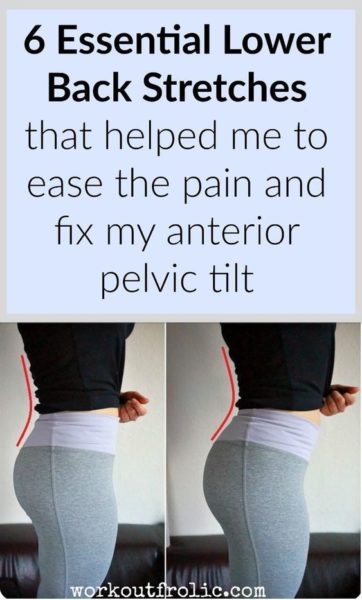The article contains affiliate links.
I am the first one to raise my hand to admit being lazy and skipping mobility work and stretching.
And yet, I would also be the first one to advocate it and tell you how absolutely crucial it is for the well-being of your body to regularly perform anterior pelvic tilt stretches, especially when you put your body through the stress of regular workouts.
I think I’ve said it before, but here it is again – the time and effort you put into your recovery are equally important as the effort you invest in your workouts.
Neglecting it can potentially bring you injuries, stiffness, and discomfort down the road. Believe me, I found that out the hard way.
One of my biggest struggles is lower back pain.
I have an anterior pelvic tilt ( not anymore as of 2020 – yay!), which means that I basically look like those butt-posing girls on Instagram even when standing normally.
Unfortunately, that makes me prone to lower back issues, as well as overstretched hamstrings and very tight hip flexors.
Now that I am aware of it, I am constantly working on improving my situation.
Here is a little more information on the Anterior pelvic tilt, in case you have the same issues as me.
Characteristics of anterior pelvic tilt
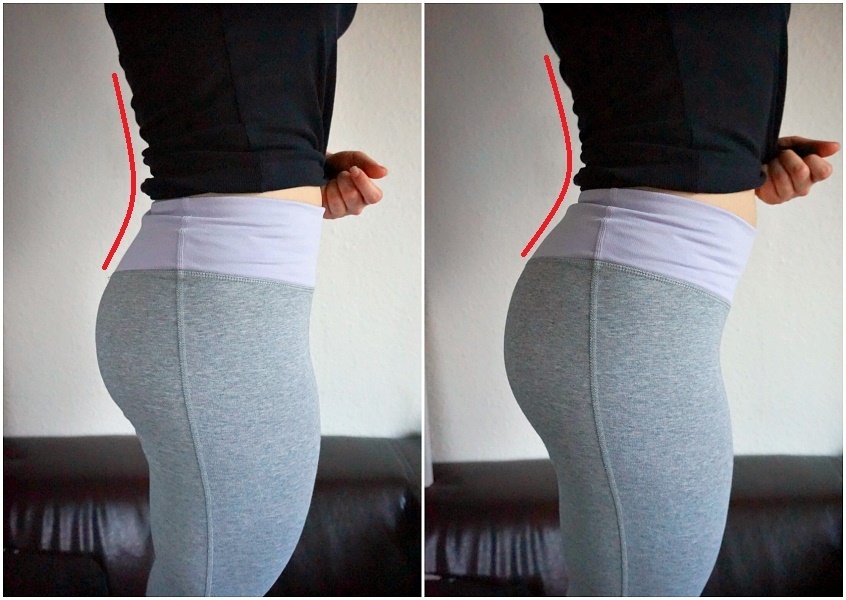
Overarched lower back, glutes that stuck out, and a protruding stomach.
What causes it?
Excessive sitting is the main culprit
Having your pelvis tilted forward is one of the many negative effects of excessive sitting – long hours in front of the computer, driving, etc.
This leads to certain imbalances in the muscles controlling the pelvis position – some become weaker, some too tight, or overactive.
On the opposite side, standing for too long with the same posture may cause you to slip into APT because maintaining a neutral spine becomes tiring.
Related read to the Anterior Pelvic Tilt Stretches:
7 Corrective Exercises To Help You Fix Your Anterior Pelvic Tilt
Physical inactivity
There are multiple muscles controlling the position of your pelvis.
Physical inactivity, in general, leads to weak and imbalanced muscles.
Through consistent and targeted strength training you can improve your posture, minimize the pain, and increase your energy levels.
Imbalanced strength training
It’s not uncommon that women will put an emphasis on training their glutes but neglect other muscles, while men will spend hours pumping their biceps but never train their lower body properly and completely neglect anterior pelvic tilt stretches.
This leads to imbalances that sooner or later manifest themselves in different ways – postural or otherwise (injuries, chronic pain).
Furthermore, different sports often demand some overuse of certain muscles leading to imbalances – e.g. boxers will often have a stronger and tighter front shoulder in comparison to their back muscles, which leads to hunched shoulders and painful upper back.
Training all muscles is key to a balanced and well-aligned body.
The anatomy of anterior pelvic tilt
As mentioned, the anterior pelvic tilt is caused by imbalances and weakness in some muscle groups (Gluteal group, Hamstring, Abdominals, Obliques) and stiffness in others (Hip flexors, Tensor fascia lata, Quadriceps, Lower back erectors, Thoracolumbar fascia).
So, logically, to fix it, you need to stretch out the overactive and stiff muscles and strengthen the weak ones.
Now, having an APT doesn’t mean that you necessarily have all those problems at once.
For me, as an example, the biggest issue is overactive hip flexors and very tight lower back erectors.
Why is a tilted pelvis an issue?
Anterior pelvic tilt commonly leads to:
- Lower back pain and tightness
- Hamstring tightness
- Knee hyperextension when standing
I know that with all the booty-posing pictures and the whole cult toward rounded glutes nowadays, ATP might seem like a nice aesthetic plus.
Unfortunately, ATP messes with your posture in a negative way and might very well be the reason why your body is so stiff and hurting (even your upper back, neck, and knees).
Related read to the Anterior Pelvic Tilt Stretches:
5 Extremely Easy Lower Back Stretches for quick pain relief
What not to do
If you have ATP, you are probably no stranger to the feeling of tightness in your hamstrings.
The logical thing you want to do is stretch them, but this is exactly what you shouldn’t be doing.
The hamstrings compensate for your tilted pelvis and overarched lower back and, as a result, they are overstretched the entire time, which gives you the sensation of tightness.
Instead of stretching them, focus on releasing and loosening the muscle groups I mentioned before.
Last but not least, as someone who is dealing with the issue herself, I can reassure you that in order to make any change and improvement, you have to consciously focus on keeping a neutral spine.
You need to learn to control the position of your pelvis throughout your day – when sitting and standing.
Remember that the default setting of your body is to assume an anterior pelvic tilt position.
Until you reboot your body into keeping a neutral pelvic tilt by itself, you’ll have to train your brain as well and be constantly aware of correcting your posture.
Other contributing factors
Extra weight in the abdominal region
Any extra weight in your abdominal area will make you prone to anterior pelvic tilt.
This means that overweight people, as well as pregnant women, will most likely develop anterior pelvic tilt.
In the cases of overweight people, losing that extra weight will greatly benefit not just their overall health but their posture as well.
Foot pronation
Another factor that can lead to anterior pelvic tilt is flat feet.
If you have this issue consider consulting with a podiatrist to examine your foot pronation and treat the problem.
Anterior Pelvic Tilt Stretches
Now that we have all that cleared out, let’s move on to the original point of this article – a lower back stretch routine, which, hopefully, can help you release any tightness or pain you experience in that area.
Check the video out for a quick overview and exercise demonstration but make sure to read up till the end for more information and details.
{If you’re not seeing the video, it’s most probably because you have an AdBlock on.}
Video: Lower back & hips stretching routine (Related to the Anterior Pelvic Tilt Stretches)
(Turn off your Ad-block if you don’t see the video)
1. Puppy Dog Pose
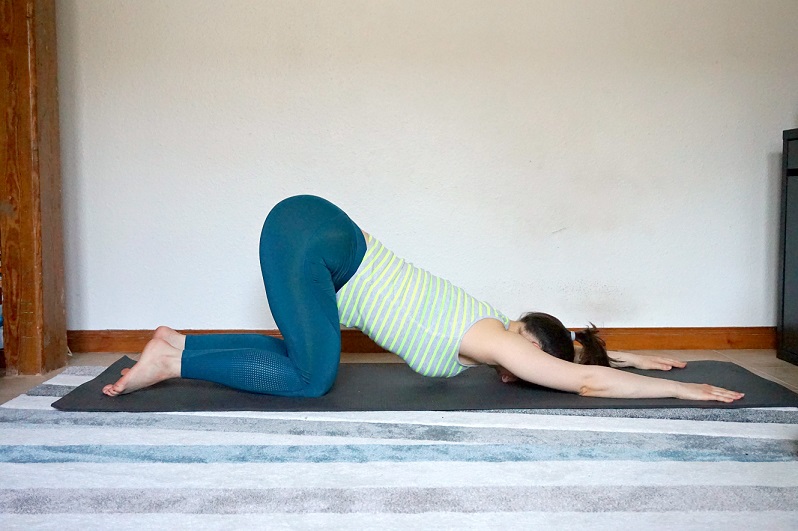
Okay, this is not exactly targeting your lower back, but it is a great pose to lengthen your spine and open your chest.
That’s why I like to start any back-stretching routine with it – it makes me feel more prepared for what’s coming next.
If you feel like your nose is being smashed, just turn your head to the side.
Hold for at least 30 seconds.
Related read to the Anterior Pelvic Tilt Stretches:
10 Desk-friendly chair stretches to relieve muscle pain
2. Upward Facing Dog
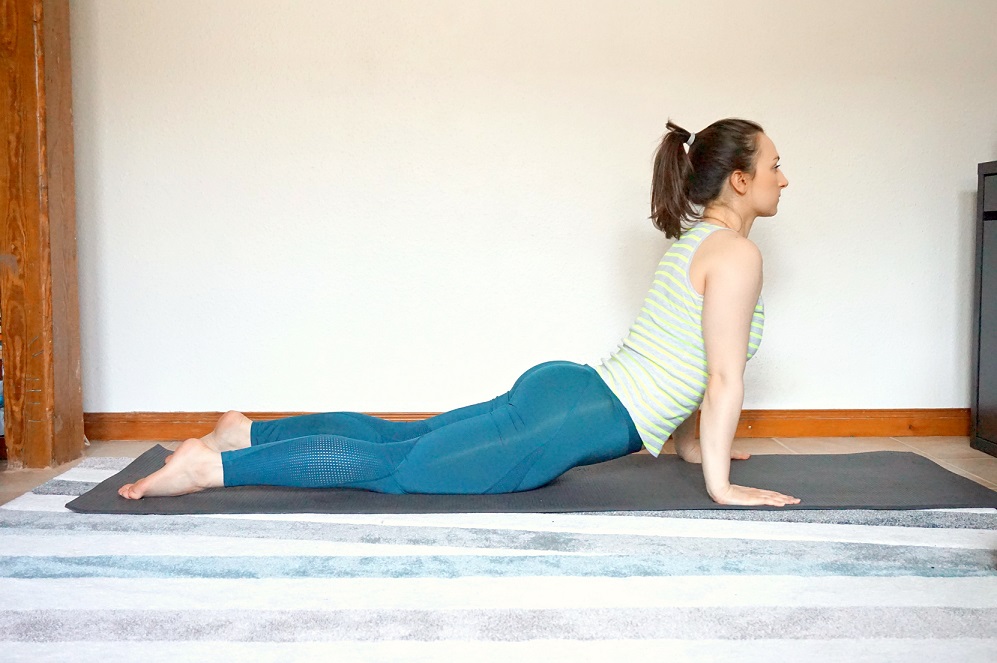
From the Puppy dog pose, I like to transition to the upward-facing dog.
This one you will definitely feel in your lower back.
You should either keep your head neutral or slightly facing toward the ceiling.
Just remember to not let your shoulders sink. Same as the previous pose – hold for at least 30 seconds.
3. Seated Forward Fold
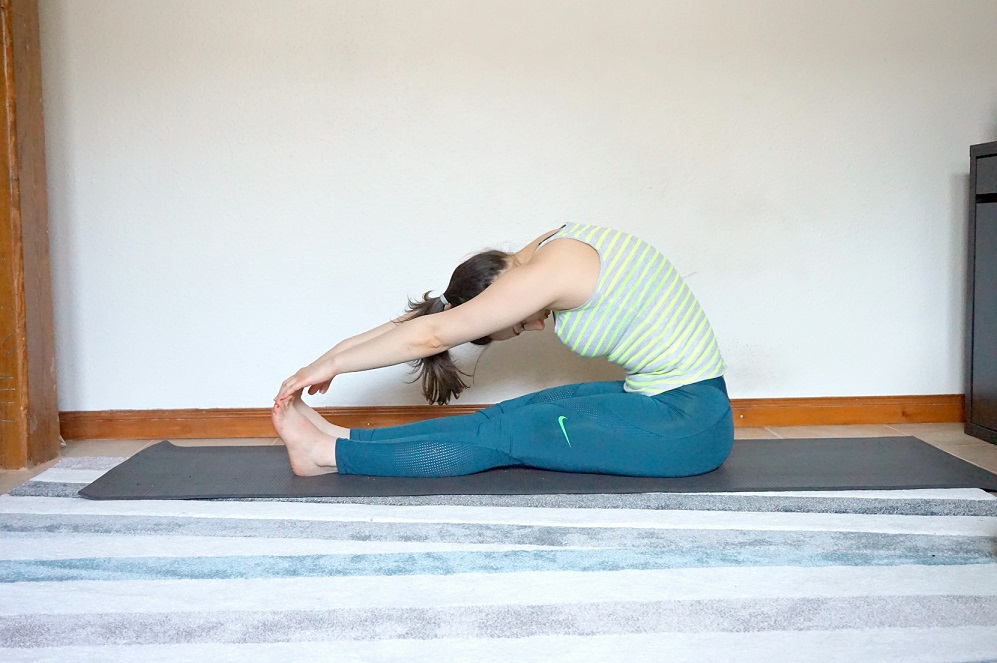
A few things to remember with this pose :
- Never force yourself further than your torso naturally can go;
- If you can’t take the sides of your feet in your hands, loop a strap around the foot soles, and hold the strap firmly;
- Keep your elbows straight, not bent. Hold for 15-30 seconds and progressively increase the time, as the pose becomes more comfortable.
Related read to the Anterior Pelvic Tilt Stretches:
10 Abs exercises better than sit-ups {6 for back pain relief}
4. Spinal Stretch
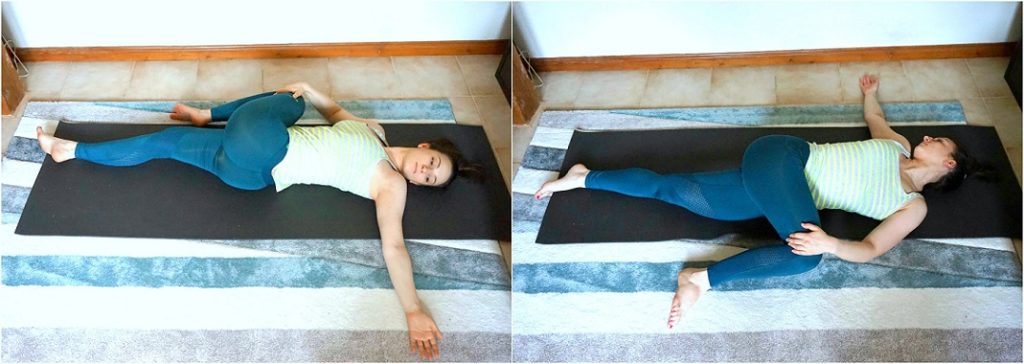
This one is a personal favorite.
Starting on the floor, the legs are stretched.
With your right arm stretched to the right, lift your right knee and move it across your left knee.
Contract your abs before bringing your knee up and over the leg. Repeat with the other leg.
If you have someone who can assist you, they can put some pressure simultaneously on your knee and shoulder to make the stretch a little more intense.
Hold for 20 to 30 seconds on each side and repeat 2-3 times.
5. Knee-To-Chest Stretch
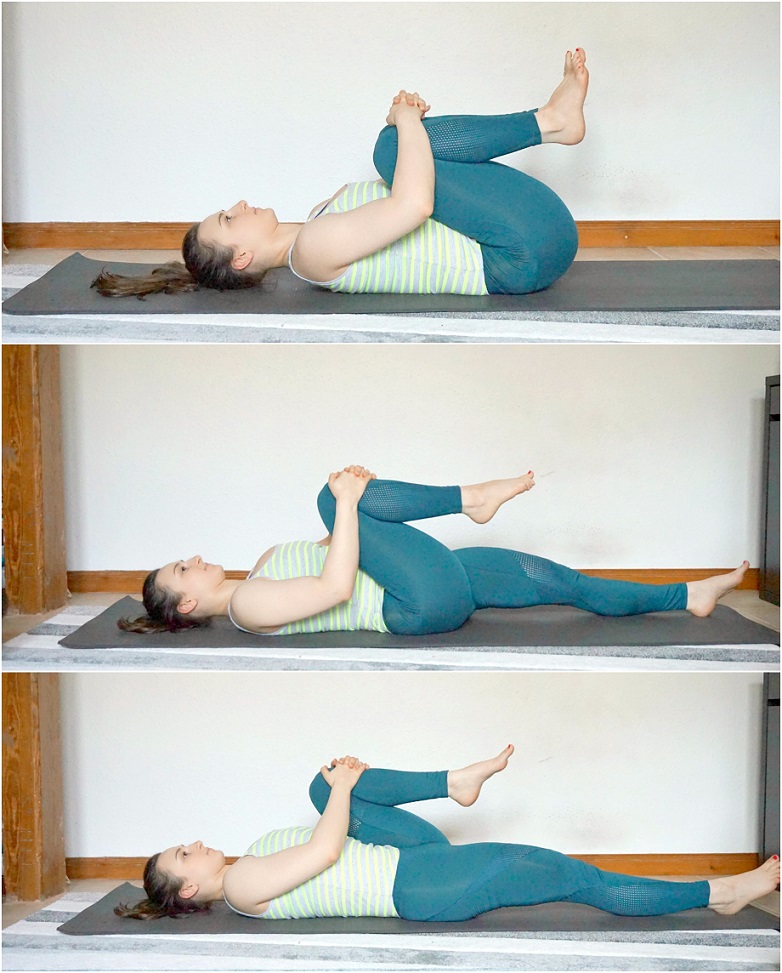
Pretty self-explanatory and a nice follow-up to the pose above.
Begin by lying with your back on the floor.
Grasp each knee, or both knees together, and pull them to your chest.
Hold for 10-15 seconds, and repeat 2-3 times.
Related read to the Anterior Pelvic Tilt Stretches:
7 corrective exercises for anterior pelvic tilt
6. Cat-Cow Stretch
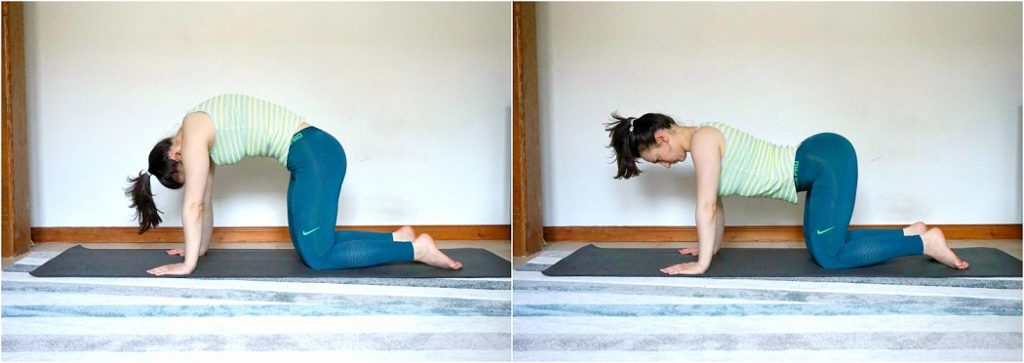
This one can also help to learn how to control the positioning of your pelvis.
Starting on your hands and knees on the floor, relax your head and allow it to drop while rounding your back up toward the ceiling.
Hold this position for as long as it feels comfortable, about 15 to 30 seconds, and come back to a neutral spine position.
Then you go in the opposite position – your stomach going toward the floor and lifting your buttocks toward the ceiling.
Hold for the same amount of time and repeat 2-4 times.
7. Child’s Pose/Extended Child’s Pose Stretch

I find both variations of the child’s pose to be very helpful and soothing.
The main difference between both is that with the regular child’s pose, you have your feet and legs together and get a nice, soft stretch in the lower back.
In the extended child’s pose, your feet are together but your knees slide apart from each other and outside your torso.
You lean forward, lowering your chest to the ground and extending your arms.
This way you get a nice hip, groin, and shoulder stretch and lengthen your spine.
I’m sure you’ll find both positions to be very calming so do them for however long you feel comfortable – 2-3 minutes or more.
Related read to the Anterior Pelvic Tilt Stretches:
8 Lower back stretches to relieve tight and painful back
8. Seated Forward Fold-On Chair
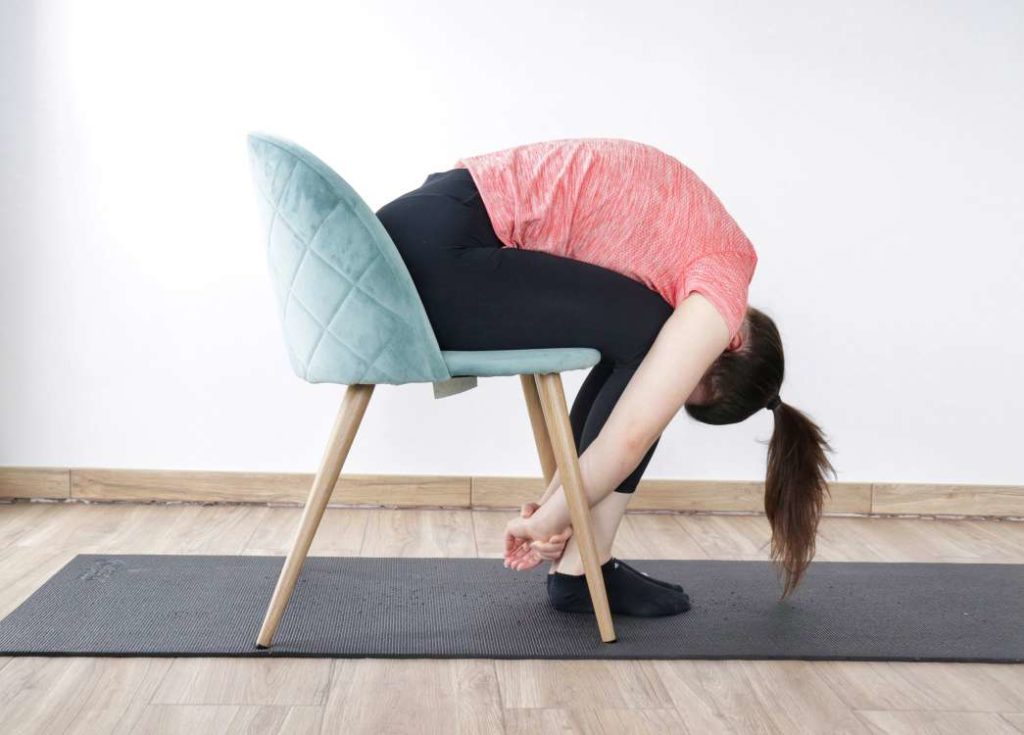
This stretch is great especially when you feel extra tight in your lower back.
The best thing is you can do it on your desk chair and get a few minutes of it throughout your workday.
Simply lean as much forward as you can while sitting on a chair. You should feel a soft stretch in your back. Hold for about a minute at a time.
9. Standing Quadriceps Stretch
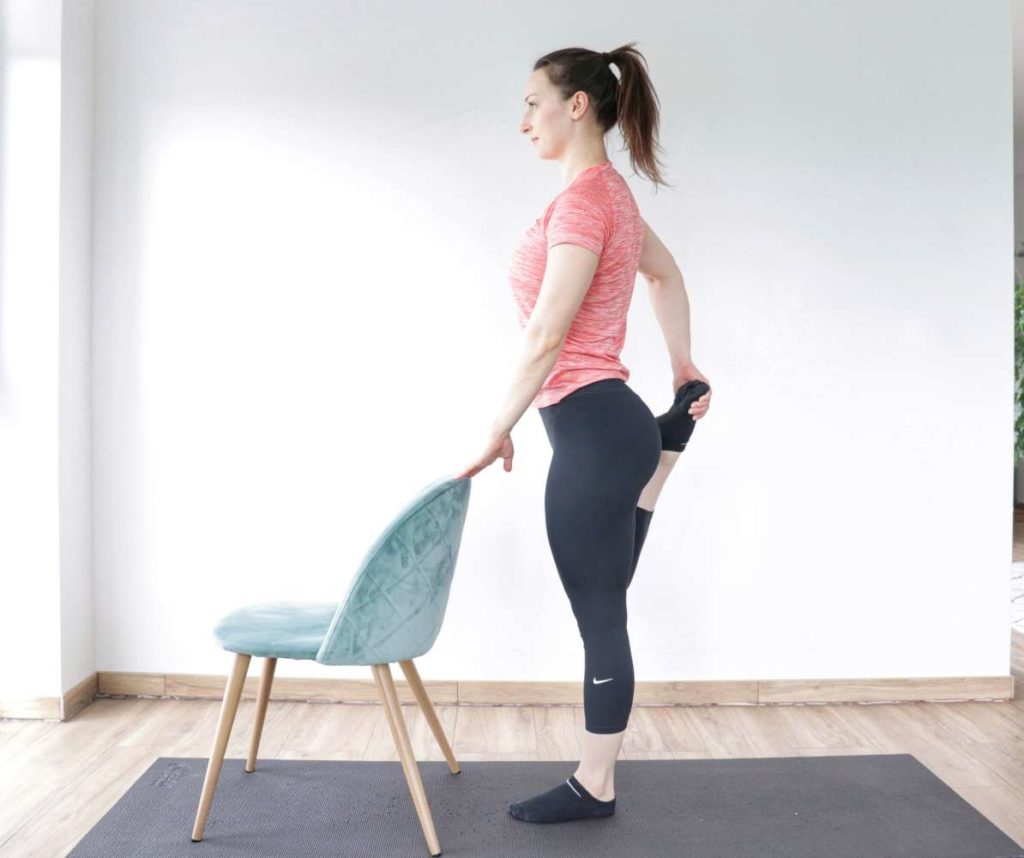
Since you have the chair there, you might as well use it to assist you in another stretching exercise that will target the front of your thigh – the quadriceps and the hip flexors.
Use the chair to hold for balance, bend your right knee, and grab your right foot/ankle, assisting it to bend further back.
Hold for 30 seconds then change sides.
Repeat for 2-3 sets.
10. Psoas Stretch/ Lunge Stretch
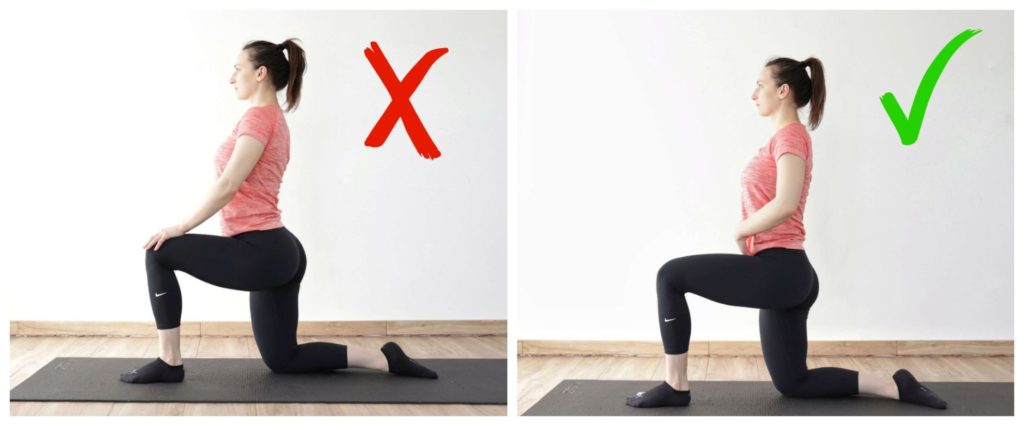
The lunge stretch is yet another way to target the hip flexors (and particularly the psoas muscle).
Make sure not to overextend your back.
In fact, to perform the exercise correctly, you need to go into the posterior pelvic tilt.
Keep your abdominal muscles tight and both knees bent at 90 degrees.
You might already feel the stretch in your hip flexors (of your back leg).
To get a deeper stretch, lean your torso forward while maintaining your posterior pelvic tilt position and tight core as shown below.
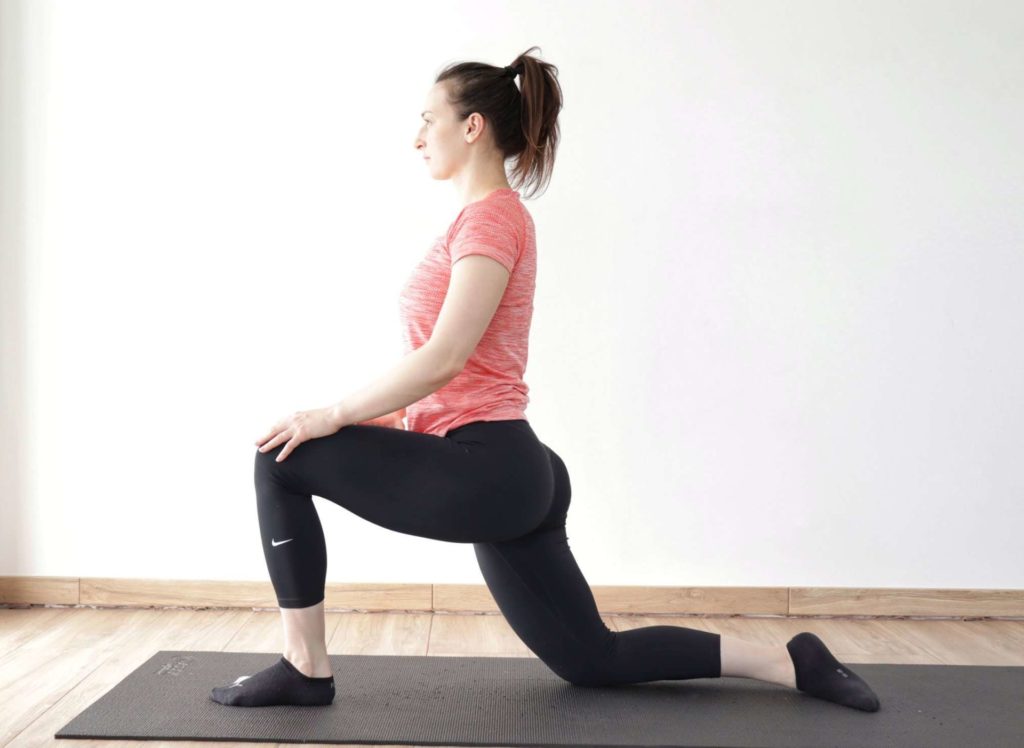
View the Anterior Pelvic Tilt Stretches: as a Web Story
Take away
How successful you’ll be in fixing or improving your anterior pelvic tilt depends largely on your consistency.
To see the best results, try to practice these stretches daily.
You don’t need to do all of them every day – you can pick 4-5 of them to do one day and then 4-5 for the next day.
Remember to keep your posture in mind throughout your day and try not to slip into anterior pelvic tilt.
When at the gym – avoid overextending your lower back when doing exercises like squats, deadlifts, or even push-ups (I’ve seen it!).
If your job involves sitting down a lot, make sure to get up frequently and take breaks.
Improving your posture and stretching prior to any physical activity is absolutely vital for preventing not only lower back pain but injuries to your body overall.
The routine here is mostly static stretching that aims to
1. improve the control you have over your spine and pelvis alignment
2. help you relax the tight muscle groups (primarily hip flexors and lower back), which contribute to posture deviation.
However, for optimal results, you need to strive to correct the muscle imbalances by strengthening the weaker muscles –
mainly abdominals and glutes.
Related read to the Anterior Pelvic Tilt Stretches:
A Morning Stretching Routine To Relieve Lower Back Pain
Frequently Asked Questions
How do you fix anterior pelvic tilt in women?
You need to regain balance in your lower body – stretch the tight muscles (hip flexors and lower back) and strengthen the weak ones (glutes and abdominals).
What is the main cause of anterior pelvic tilt?
There are many factors that can cause an anterior pelvic tilt – starting from excessive sitting, muscle imbalances due to improper strength training, foot pronation, physical inactivity, and to some extent – genetic predisposition.
How do I know if I have an anterior pelvic tilt?
There’s a simple test you can do to help you determine if you have an anterior pelvic tilt – it’s called the Thomas’ test, named after the British surgeon Hugh Owen Thomas.
Should I worry about anterior pelvic tilt?
Yes – you should be worried. Anterior pelvic tilt commonly leads to lower back pain and tightness, hamstring tightness, and knee hyperextension when standing.
I’d love to hear more about you!
Are you experiencing any lower back pain?
What are your ways to prevent or minimize it?
Also, if you found this article helpful, don’t forget to pin it!
Thank you! 🙂
